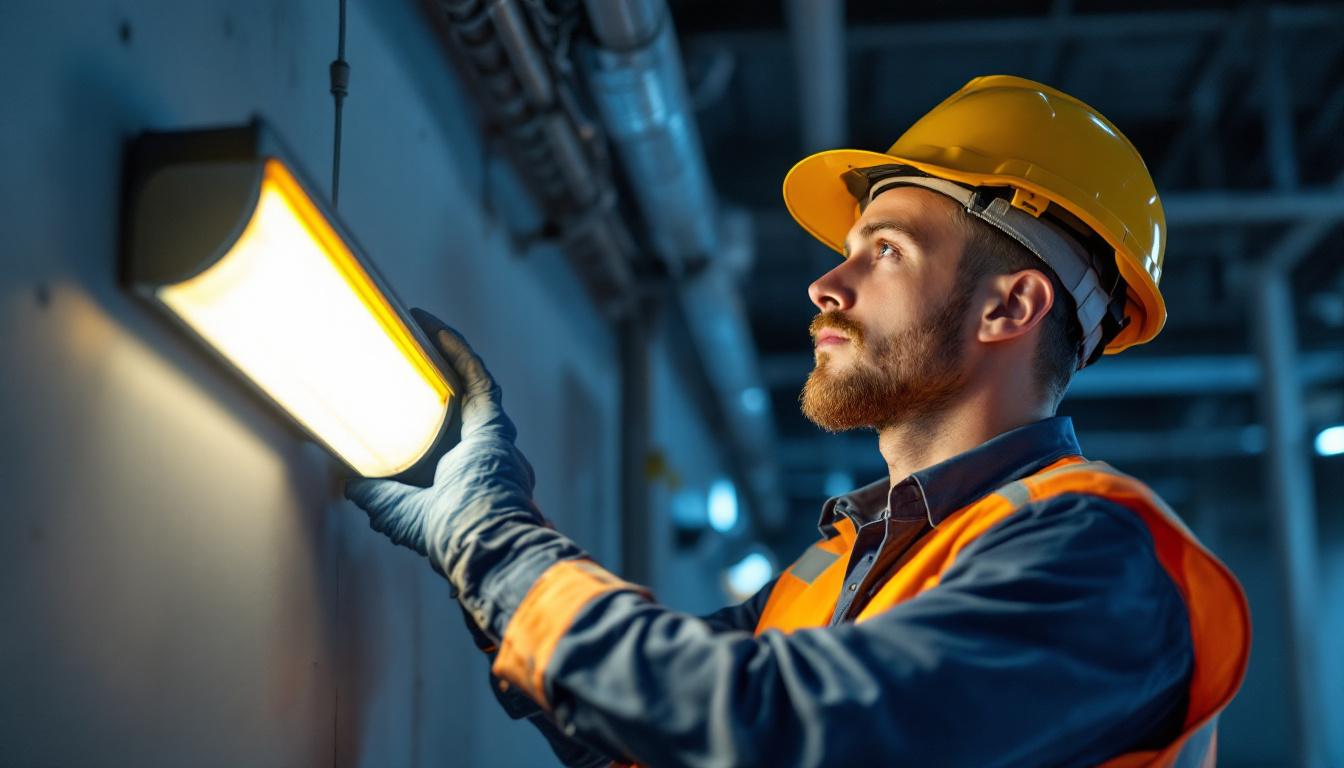
In the world of lighting installation, particularly for emergency LED lights, precision and knowledge are paramount. As a lighting contractor, understanding the nuances of emergency lighting systems can make a significant difference in the safety and satisfaction of your clients. This guide aims to highlight common pitfalls to avoid when working with emergency LED lights, ensuring that your projects are successful and compliant with regulations.
Emergency LED lighting serves a critical function in ensuring safety during power outages or emergencies. These lights are designed to activate automatically, providing illumination to guide occupants to safety. However, the effectiveness of these systems largely depends on proper installation and maintenance.
One of the foremost considerations for lighting contractors is compliance with local codes and regulations. Many jurisdictions have specific requirements regarding the installation of emergency lighting systems. Failing to adhere to these regulations can result in penalties and jeopardize the safety of building occupants.
It is essential to stay updated on the latest codes and standards, such as those set by the National Fire Protection Association (NFPA) and the International Building Code (IBC). Regular training and certification can help ensure that contractors are well-informed and capable of meeting these requirements. Furthermore, understanding the nuances of local legislation can aid in the selection of appropriate fixtures and systems that not only comply but also enhance the safety features of the building.
Not all emergency LED lights are created equal. Selecting the right products involves understanding the specific needs of the environment in which they will be installed. Factors such as brightness, battery life, and the type of emergency scenarios anticipated should guide product selection.
Contractors should also consider the quality of the LED lights. Investing in reputable brands can lead to better performance and longevity, reducing the likelihood of failures during critical moments. Conducting thorough research and consulting with manufacturers can provide valuable insights into the best products for various applications. Additionally, it is beneficial to evaluate the energy efficiency of the LED units, as this can contribute to lower operational costs and a reduced environmental footprint over time. Moreover, integrating smart technology with emergency lighting systems can enhance their functionality, allowing for real-time monitoring and diagnostics that ensure reliability when it matters most.
Even experienced contractors can fall into traps that compromise the effectiveness of emergency LED lighting systems. Awareness of these common mistakes can help ensure successful installations and satisfied clients.
One of the most significant mistakes lighting contractors can make is failing to conduct a thorough site assessment before installation. Each building presents unique challenges and requirements. Without a comprehensive understanding of the layout, potential hazards, and occupancy patterns, it is easy to overlook critical factors that influence lighting placement.
Planning should include evaluating escape routes, high-traffic areas, and potential obstructions that could hinder visibility during emergencies. Engaging with building owners and facility managers can provide additional insights that enhance the planning process. Furthermore, it is beneficial to consider the specific needs of various occupants, such as individuals with disabilities, who may require additional guidance and support during an emergency evacuation. By incorporating these considerations into the planning phase, contractors can create a more effective lighting strategy that caters to the diverse needs of all building occupants.
Emergency lighting systems require regular maintenance to ensure they function correctly when needed. A common oversight is neglecting to establish a routine maintenance schedule. This can lead to dead batteries, malfunctioning lights, and ultimately, a failure to provide adequate illumination during emergencies.
Contractors should educate clients on the importance of regular testing and maintenance. This includes checking battery life, ensuring that lights are free from obstructions, and verifying that all systems are operational. Providing clients with a maintenance checklist can be a valuable tool in promoting ongoing safety. Additionally, contractors might consider offering a maintenance service package that includes periodic inspections and updates to the system, ensuring that clients remain compliant with safety regulations and standards. This proactive approach not only enhances the reliability of the emergency lighting systems but also fosters a long-term relationship between contractors and clients, built on trust and commitment to safety.
Proper installation is crucial to the effectiveness of emergency LED lights. Adhering to best practices can significantly enhance the reliability of these systems.
Strategic placement of emergency LED lights is essential for maximizing visibility and effectiveness. Lights should be installed in areas where they can provide the most benefit, such as near exits, stairwells, and hallways. Additionally, contractors should consider the height and angle of installation to ensure optimal illumination.
It is also vital to ensure that lights are not obstructed by furniture, decorations, or other objects. Regular inspections can help identify any potential obstructions that may arise after installation. Furthermore, the use of reflective materials on walls or ceilings can enhance the distribution of light, making it even more effective in guiding individuals to safety during an emergency. In larger spaces, such as auditoriums or warehouses, it may be beneficial to conduct a lighting audit to determine the most effective locations for additional fixtures, ensuring that every corner is adequately lit.
Proper wiring is another critical aspect of emergency lighting installation. Contractors should ensure that all wiring complies with local codes and is capable of supporting the power needs of the emergency lights. Using the correct gauge of wire and ensuring secure connections can help prevent issues down the line.
Additionally, understanding the power supply is crucial. Emergency lights typically rely on battery backup systems. Contractors should assess the capacity of these batteries and ensure they are adequately charged and maintained. This will help ensure that lights remain operational during power outages. Regular testing of the battery systems is also recommended; many jurisdictions mandate monthly or quarterly tests to verify functionality. Moreover, considering the integration of smart technology can further enhance the reliability of emergency lighting systems. Smart systems can provide real-time monitoring and alerts for battery status and light functionality, allowing for proactive maintenance and ensuring that emergency lighting is always ready when needed.
After installation, testing the emergency LED lights is a vital step that should never be overlooked. This process not only verifies that the lights function correctly but also ensures compliance with safety regulations. Regular checks can prevent potential failures during emergencies, which could have dire consequences. Therefore, it is essential to treat this phase of installation with the utmost seriousness, as it directly impacts the safety of occupants and the overall efficacy of the emergency response plan.
Regular testing of emergency lighting systems is essential to ensure reliability. Many codes require monthly and annual testing protocols. Monthly tests typically involve a brief check to ensure lights activate, while annual tests may require a full discharge of the battery to verify that it can sustain the lights for the required duration. These tests not only confirm functionality but also help identify any components that may be nearing the end of their operational life, allowing for timely replacements and minimizing downtime.
Documenting all tests and maintenance activities is also crucial. This documentation can serve as proof of compliance during inspections and can help identify any recurring issues that may need to be addressed. Additionally, maintaining a detailed log can assist in tracking the performance of the lighting systems over time, providing insights into patterns that may indicate the need for upgrades or changes in testing protocols.
Building management plays a critical role in the ongoing maintenance and testing of emergency lighting systems. Contractors should establish clear lines of communication with facility managers to ensure that they are aware of testing schedules and maintenance requirements. Regular meetings can be beneficial for discussing any changes in regulations or technology that may affect the emergency lighting systems, ensuring that all parties are aligned and informed.
Providing training for building staff on the operation and maintenance of emergency lights can further enhance safety. This proactive approach fosters a culture of safety and preparedness within the organization. Furthermore, staff should be educated on how to respond in the event of a power failure or emergency situation, including the proper use of emergency lighting to guide occupants to safety. By empowering employees with knowledge and skills, organizations can significantly improve their overall emergency readiness and response capabilities, ultimately safeguarding lives and property.
The lighting industry is continually evolving, with new technologies emerging to enhance the effectiveness of emergency lighting systems. Staying informed about these advancements can provide contractors with a competitive edge.
Smart emergency lighting systems integrate advanced technologies such as IoT connectivity and real-time monitoring. These systems can provide valuable data on the status of emergency lights, alerting facility managers to any issues that may arise.
Contractors should consider the benefits of these systems, including remote monitoring capabilities and automated testing features. By offering clients smart solutions, contractors can enhance safety and streamline maintenance processes.
As energy efficiency becomes increasingly important, contractors should explore energy-efficient emergency lighting options. LED technology is inherently more energy-efficient than traditional lighting solutions, but there are also advanced options that further reduce energy consumption.
Solar-powered emergency lights, for example, can provide an eco-friendly solution that reduces reliance on grid power. These systems can be particularly beneficial in remote locations or areas prone to power outages.
Emergency LED lighting is a critical component of any safety plan, and lighting contractors play a vital role in ensuring these systems are installed and maintained correctly. By avoiding common mistakes, adhering to best practices, and staying informed about advancements in technology, contractors can enhance the effectiveness of emergency lighting systems.
Ultimately, the goal is to provide clients with reliable, compliant, and efficient emergency lighting solutions that ensure the safety of building occupants. By prioritizing education, communication, and quality, lighting contractors can build a reputation for excellence in emergency lighting installations.
Ready to elevate your emergency lighting installations with products that blend quality, compliance, and cost-efficiency? Look no further than LumenWholesale for your lighting needs. Our extensive selection of spec-grade lighting products is designed to meet the highest industry standards, ensuring you deliver reliable and high-performance lighting solutions to your clients. With unbeatable wholesale prices and the convenience of free shipping on bulk orders, you can trust LumenWholesale to provide the best value without any hidden fees. Make the smart choice for your next project and experience the best in wholesale lighting today.

Discover how ceiling LED lights can revolutionize your lighting projects by enhancing efficiency and sustainability.

Discover the essential guide for lighting contractors with our comprehensive checklist for 150 Watt LED installations.

Discover expert tips from a seasoned lighting contractor on selecting and installing hanging pendant lights.

Discover how industrial warehouse LED lighting can revolutionize your lighting installation projects.